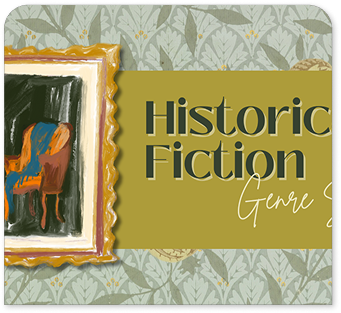UNIT I: NUMBER SYSTEMS
1. REAL NUMBERS
1. Review of representation of natural numbers, integers, and rational numbers on the number line. Rational numbers as recurring/terminating decimals. Operations on real numbers.
2. Examples of non-recurring/non-terminating decimals. Existence of non-rational numbers (irrational numbers), such as π, and their representation on the number line. Explaining that every real number is represented by a unique point on the number line and conversely, viz., every point on the number line represents a unique real number.
3. Definition of nth root of a real number.
4. Rationalization (with precise meaning) of real numbers of the type and (and their combinations) where x and y are natural numbers and a and b are integers.
5. Recall of laws of exponents with integral powers. Rational exponents with positive real bases (to be done by particular cases, allowing the learner to arrive at the general laws.)
UNIT II: ALGEBRA
1. POLYNOMIALS
Definition of a polynomial in one variable, with examples and counterexamples. Coefficients of a polynomial, terms of a polynomial, and zero polynomial. Degree of a polynomial. Constant, linear, quadratic, and cubic polynomials. Monomials, binomials, and trinomials. Factors and multiples. Zeros of a polynomial. Motivate and state the remainder theorem with examples. Statement and proof of the Factor Theorem. Factorization of ax² + bx + c, a ≠ 0, where a, b, and c are real numbers, and of cubic polynomials using the Factor Theorem. Recall of algebraic expressions and identities. Verification of identities: (x+y+z)²=x²+y²+z²+2xy+2yz+zx (x+y)³=x³+y³+3xy(x+y)x³+y³=(x+y)(x²+xy+y²x³+y³+z³-3xyz=(x+y+z)(x²+y²+z²-xy-yz-zx) and their use in factorization of polynomials.
2. LINEAR EQUATIONS IN TWO VARIABLES
Recall of linear equations in one variable. Introduction to the equation in two variables. Focus on linear equations of the type ax + by + c = 0. Explain that a linear equation in two variables has infinitely many solutions and justify their being written as ordered pairs of real numbers, plotting them, and showing that they lie on a line.
UNIT III: COORDINATE GEOMETRY
COORDINATE GEOMETRY
The Cartesian plane, coordinates of a point, names and terms associated with the coordinate plane, and notations.
UNIT IV: GEOMETRY
1. INTRODUCTION TO EUCLID'S GEOMETRY
History—Geometry in India and Euclid's geometry. Euclid's method of formalizing observed phenomena into rigorous mathematics with definitions, common/obvious notions, axioms/postulates, and theorems. The five postulates of Euclid. Showing the relationship between axiom and theorem, for example:
(Axiom) 1. Given two distinct points, there exists one and only one line through them.
(Theorem) 2. (Prove) Two distinct lines cannot have more than one point in common.
2. LINES AND ANGLES
1. (Motivate) If a ray stands on a line, then the sum of the two adjacent angles so formed is 180° and the converse.
2. (Prove) If two lines intersect, vertically opposite angles are equal.
3. (Motivate) Lines that are parallel to a given line are parallel.
3. TRIANGLES
1. (Motivate) Two triangles are congruent if any two sides and the included angle of one triangle are equal to any two sides and the included angle of the other triangle (SAS Congruence).
2. (Prove) Two triangles are congruent if any two angles and the included side of one triangle are equal to any two angles and the included side of the other triangle (ASA Congruence).
3. (Motivate) Two triangles are congruent if the three sides of one triangle are equal to the three sides of the other triangle (SSS Congruence).
4. (Motivate) Two right triangles are congruent if the hypotenuse and a side of one triangle are equal (respectively) to the hypotenuse and a side of the other triangle. (RHS Congruence)
5. (Prove) The angles opposite to equal sides of a triangle are equal.
6. (Motivate) The sides opposite to equal angles of a triangle are equal.
4. QUADRILATERALS
1. (Prove) The diagonal divides a parallelogram into two congruent triangles.
2. (Motivate) In a parallelogram, opposite sides are equal, and conversely.
3. (Motivate) In a parallelogram, opposite angles are equal, and conversely.
4. (Motivate) A quadrilateral is a parallelogram if a pair of its opposite sides is parallel and equal.
5. (Motivate) In a parallelogram, the diagonals bisect each other and conversely.
6. (Motivate) In a triangle, the line segment joining the midpoints of any two sides is parallel to the third side and half of it, and (motivate) its converse.
5. CIRCLES
(Prove) Equal chords of a circle subtend equal angles at the center and (motivate) its converse.
(Motivate) The perpendicular from the center of a circle to a chord bisects the chord, and conversely, the line drawn through the center of a circle to bisect a chord is perpendicular to the chord.
3. (Motivate) Equal chords of a circle (or of congruent circles) are equidistant from the center (or their respective centers) and conversely.
(Prove) The angle subtended by an arc at the center is double the angle subtended by it at any point on the remaining part of the circle.
(Motivate) Angles in the same segment of a circle are equal.
(Motivate) If a line segment joining two points subtends equal angles at two other points lying on the same side of the line containing the segment, the four points lie on a circle.
(Motivate) The sum of either of the pair of opposite angles of a cyclic quadrilateral is 180°, and its converse.
UNIT V: MENSURATION
1. AREAS
Area of a triangle using Heron's formula (without proof)
2. SURFACE AREAS AND VOLUMES
Surface areas and volumes of spheres (including hemispheres) and right circular cones.
UNIT VI: STATISTICS
STATISTICS
Bar graphs, histograms (with varying base lengths), and frequency polygons.



